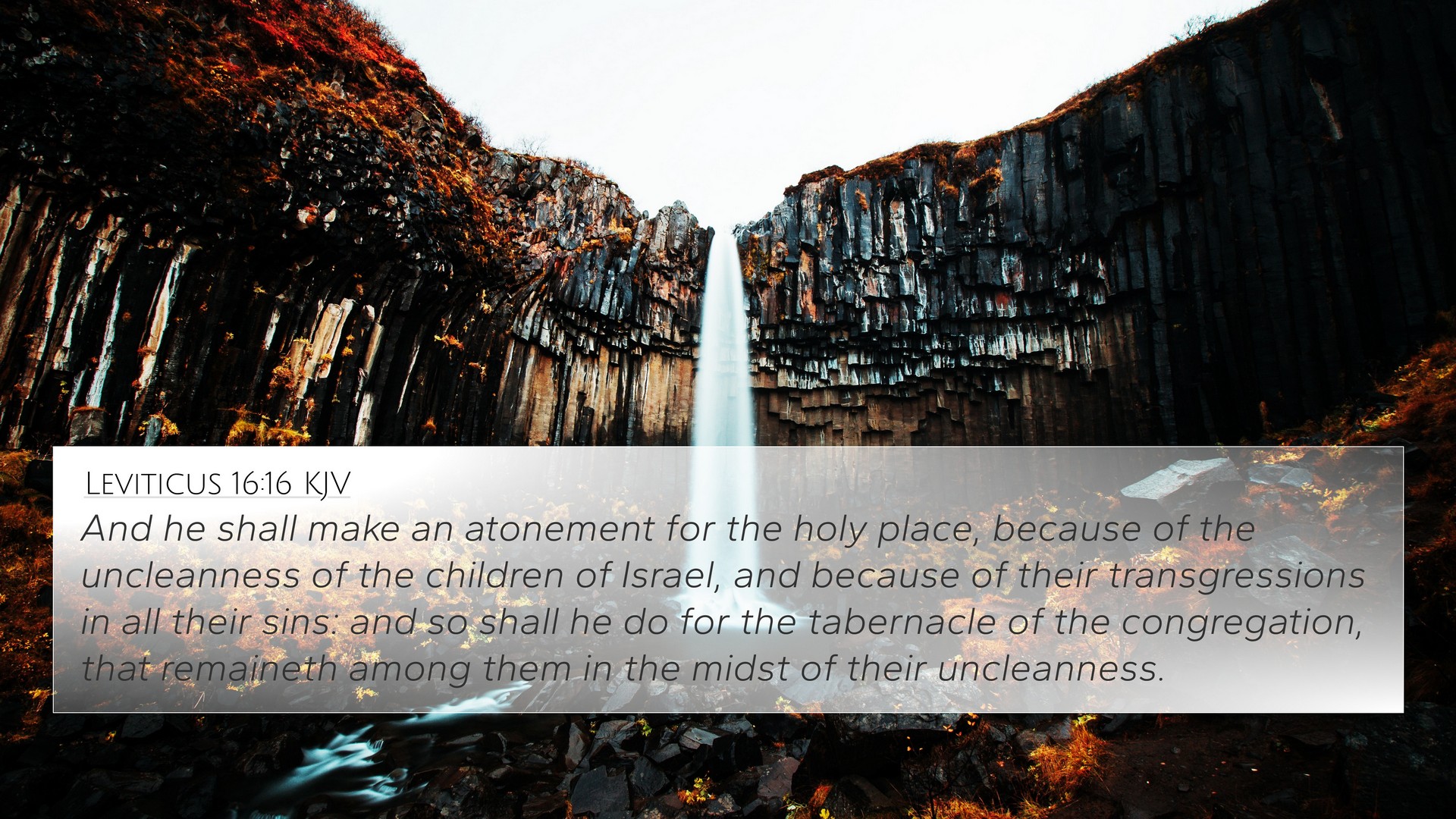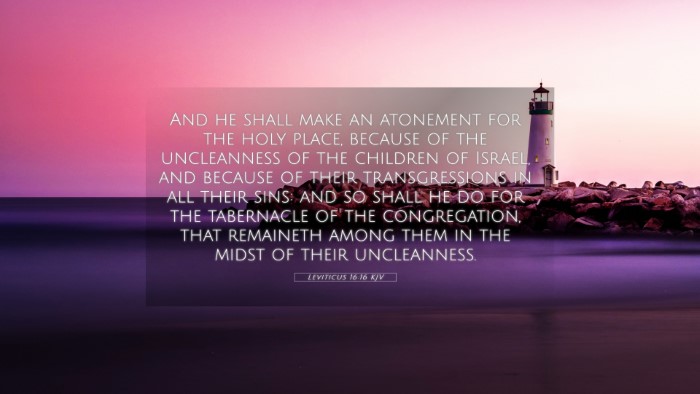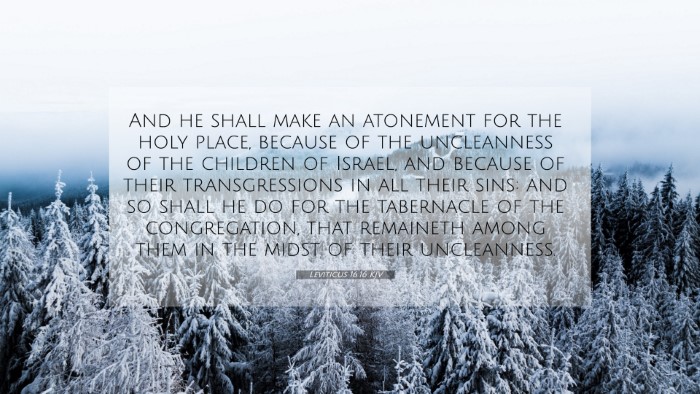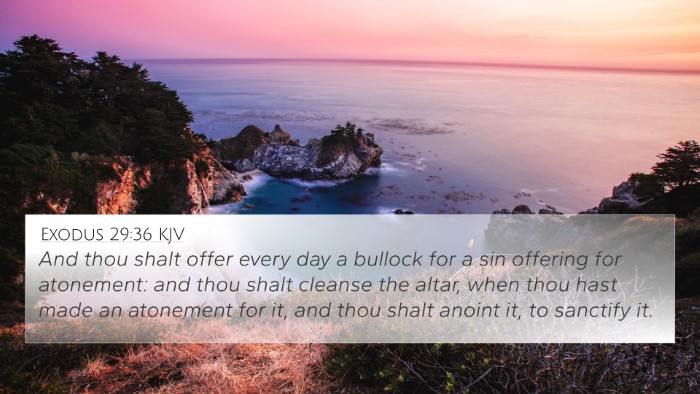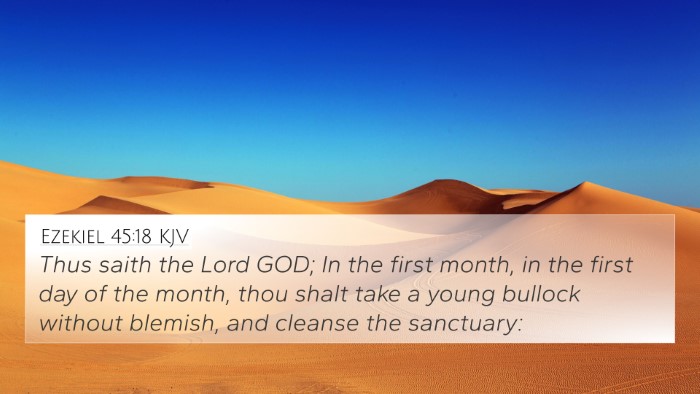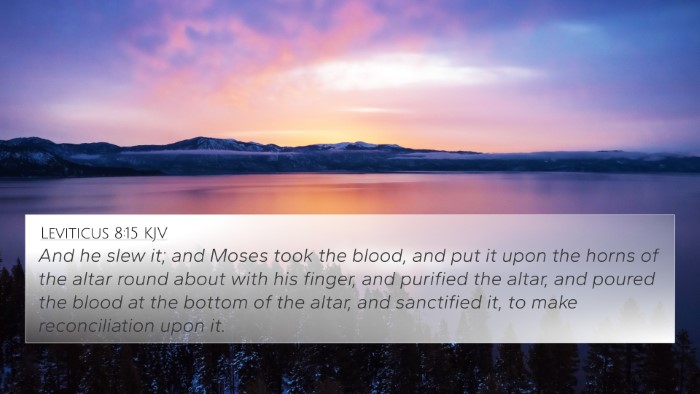Understanding Leviticus 16:16
Leviticus 16:16 speaks about a significant ritual performed on the Day of Atonement, where the high priest makes atonement for the sins of the people of Israel. The verse reads:
"And he shall make an atonement for the holy place, because of the uncleanness of the children of Israel, and because of their transgressions in all their sins: and so shall he do for the tabernacle of the congregation, that remaineth among them in the midst of their uncleanness."
Verse Meaning and Interpretation
This verse encapsulates key themes of atonement and holiness, central to the worship practices outlined in the Old Testament. Below are insights derived from various public domain commentaries:
Insights from Matthew Henry
Matthew Henry's Commentary emphasizes the seriousness of sin and the necessity of atonement. He notes that the holy place represents God's dwelling among His people, and the uncleanness mentioned signifies the moral and spiritual failings of the Israelites. Atonement was vital to restore the relationship between God and His people, indicating God's readiness to forgive and a call for His followers to maintain holiness.
Insights from Albert Barnes
Albert Barnes' Notes on the Bible outlines the procedural aspect of the Day of Atonement. He explains that the high priest's actions symbolize Christ's ultimate sacrifice for humanity. The need for atonement for both people’s sins and the contamination of the holy sanctuary reinforces the idea that sin affects not just individuals but the entire community and even sacred spaces.
Insights from Adam Clarke
Adam Clarke's Commentary highlights the significance of the high priest's duties, indicating that they were meant to represent Christ, our High Priest, who intercedes for humanity. Clarke points out that the term “uncleanness” implies both ceremonial and moral impurity, which necessitated a comprehensive cleansing process, reflecting God's desire for purity and justice within His systems of worship.
Thematic Connections to Other Scriptures
Leviticus 16:16 shares thematic connections with several other Bible verses, which further illuminate its meaning:
- Hebrews 9:7 - Discusses the high priest entering the most holy place once a year with blood for himself and for the sins of the people.
- 1 John 1:9 - Encourages believers that if we confess our sins, God is faithful and just to forgive us and purify us from all unrighteousness.
- Isaiah 53:5 - Prophecies concerning Christ's suffering, aligning the idea of atonement through His wounds being our healing.
- Matthew 27:51 - Describes the tearing of the temple veil, symbolizing access to God and the end of the sacrificial system.
- Romans 8:1 - Proclaims there is no condemnation for those who are in Christ Jesus, linking the idea of atonement to New Testament grace.
- Exodus 30:10 - Details the annual atonement for the altar, affirming the need for continual cleansing before God.
- Psalm 51:7 - "Purify me with hyssop, and I shall be clean" resonates with the theme of purification found in Leviticus.
Comparative Bible Verse Analysis
Engaging in a comparative Bible verse analysis around Leviticus 16:16 offers vast insight. For example, comparing this verse with Hebrews 9 allows for a deeper understanding of how Old Testament practices foreshadowed New Testament realities. Similarly, by examining Romans 5:8, one can appreciate the depth of love displayed in God's plan for salvation.
Tools for Bible Cross-Referencing
Exploring tools for Bible cross-referencing can significantly enhance one's study of Leviticus 16:16. Various resources such as a Bible concordance or a cross-reference Bible study can help identify thematic ties and deepen scriptural understanding.
Conclusion
In summary, Leviticus 16:16 is not merely a historical account but an integral part of the biblical narrative that lays the groundwork for understanding sin, atonement, and redemption through Christ. By leveraging tools for cross-referencing and recognizing connections among Thematic Bible verse connections, one can grasp the profound implications of this passage. Engaging with such Scripture not only enriches personal faith but also invites believers into inter-Biblical dialogue that enhances the overall comprehension of God's word.
